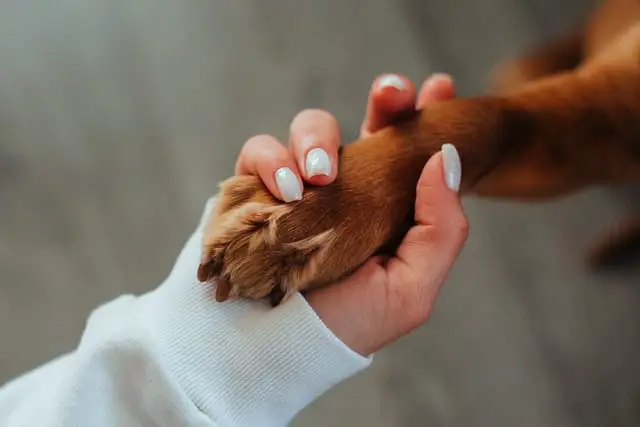Dogs can be left-handed or right-handed, and this laterality influences their character, creativity and even possible aggressiveness, according to some scientists.

Like people, dogs can also be left-handed or right-handed . Knowing it can be important. Various investigations link different patterns of the dog’s character with the fact that it uses its left or right paw more , among them, the possibility of it becoming a guide dog for the blind , its possible aggressive behaviour and even its creativity. This article also includes a simple test to find out if the dog is left-handed or right-handed, and the opinion of canine educators on these findings.
Is your dog left-handed or right-handed?
Dogs and cats are also left-handed, right-handed or ambidextrous, just like people
People are not the only ones who feel a preference for using the right hand more or, on the contrary, the left. Dogs and cats can also be left-handed or right-handed.
Like people with our hands, there are dogs that are more skilled with their right front leg and others that are more skilled with the left. But, while the percentage of right – handed humans (90%) is much higher than that of left-handers (10%), among dogs the laterality is better distributed. The half of the dogs are right and the other half, left – handed. The percentage of ambidextrous dogs is not very relevant, according to these scientists.
Finding out if our dog is left-handed or right-handed , however, can be important. The reason? More and more investigations relate different patterns of the character of the dog with the fact that this is right-handed or left-handed. Even canine creativity could be conditioned by the greater skill of the animal with one part or another of its body.
As in people, dogs are also born right or left-handed.
And laterality can affect a dog’s ability to acquire certain skills, such as becoming a guide dog; something easier, in principle, for a right-handed dog.
Left-handed dogs and right-handed dogs, are they different?
Right-handed dogs tend to be more effective in tests to act as guides for blind people
The left brain of the dog manages the pleasant feelings of the animal, including love and affection in the dog. In contrast, the right half of the canine brain is responsible for feelings considered negative, such as the dog’s aggressiveness , fear, and depression.
This different functionality of the canine brain explains, for example, why the dog’s tail flicks more frequently to its right side, when the animal is happy. And that, on the contrary, when the dog feels threatened, it moves its tail more to the extreme left.
Similarly, the different work of the cerebral hemispheres could influence some canine abilities. Right-handed dogs turn out to be easier to train in order to become great guide dogs.
However, left-handed dogs also seem to have an advantage in another field: creativity . In this way, left-handed dogs seem to be quicker to find imaginative solutions to problems that are presented to them.
Left-handed dogs, are they more aggressive?
The possible aggressiveness of some dogs could also be related to their greater ability to use one side of the brain or the other. Since dogs can be left-handed or right-handed.
The possible connection between aggressiveness and laterality in dogs is a question that, however, arouses some controversy ; and many canine educators are cautious .
Studies to determine if dogs are left-handed, right-handed or ambidextrous are curious; but, in my opinion, they are not very relevant to be applied in the education and understanding of the dog.
The character of a dog is not only a factor of its genetics, remember canine educators, but of many conditions that can become much more important. What determines the way of being of a dog are factors such as the environment, its development and its education; not whether the dog is left-handed or right-handed.
Is your dog left-handed? Quick test to find out

Like humans, dogs can be right-handed, left-handed, or (few) ambidextrous . But how to recognize them? .
The dog is given a toy stuffed with food ( kong type ), and it is checked which leg it uses first to catch it. The experiment, to be representative, would have to be repeated at least 100 times over several days.
More tricks to know if the dog is right-handed or left-handed? Observe which of the legs the dog uses to pick something up from under a piece of furniture, for example. And the number of times each limb is used is counted again, to obtain a reliable result.
